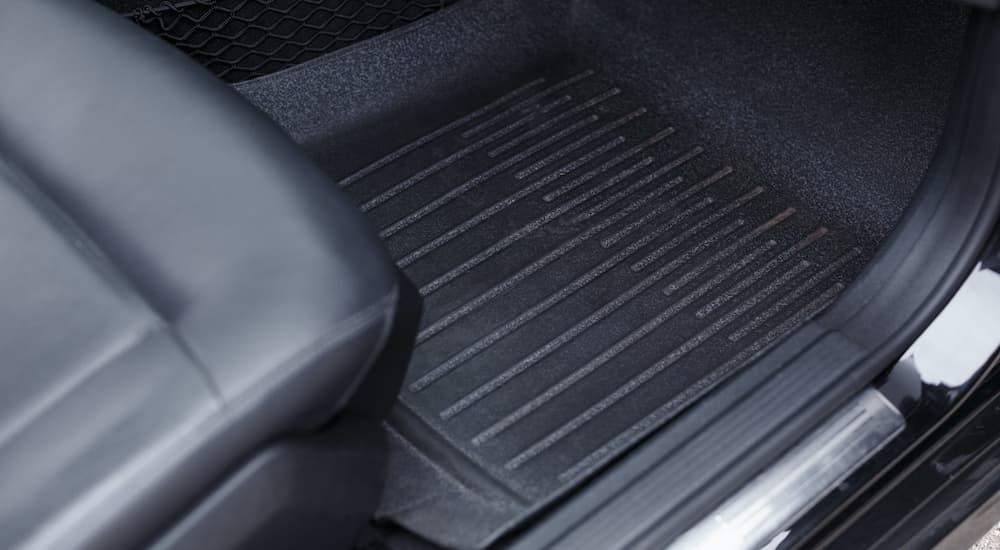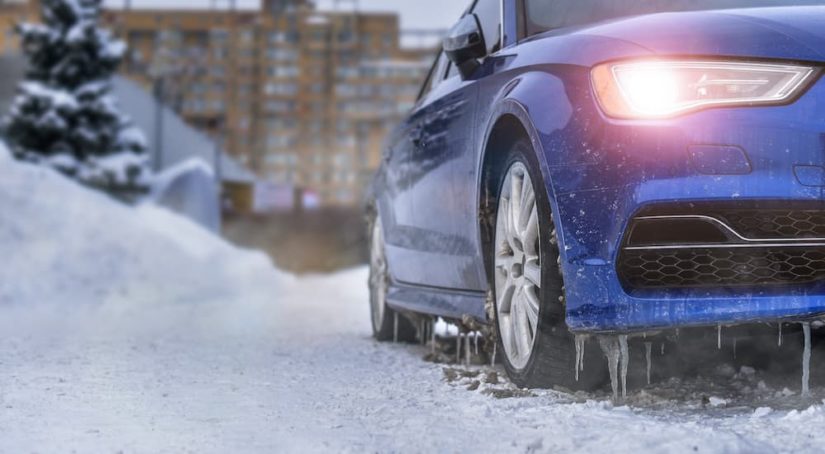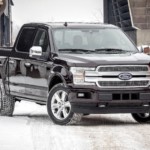It’s a winter wonderland outside as snow falls and blankets the ground. The forecast shows more snow coming over the next week, and that’s motivated your search for the best winter tire dealers in the area. While winter tires are a necessity for navigating snow-covered roads and wintry conditions, there are plenty of other car features that can make driving in the snow safer and more enjoyable. From heated seats and mirrors to remote start and all-weather floor mats, here’s a guide to the best features for driving in the snow.
#1 – Heated Everything!
While you may not think twice about heated seats or a heated steering wheel in the summer months, they make a world of difference in the middle of winter when everything is frozen, and you’re desperate for warmth. Once considered a luxury, heated seats and a heated steering wheel are now common options on most vehicles and one that you should definitely opt for if you live in an area with harsh winters. Since your vehicle’s heater relies on the engine to warm up, it can take longer for the vehicle’s cabin to give you the warmth you want or need. Heated seats and a heated steering wheel are electrically heated, which means they start working instantly.
The defroster in your vehicle helps maximize your visibility by keeping the windows clear when there’s a drastic difference in temperature between the exterior and interior of the vehicle. Heated side mirrors are designed to do the same thing and rely on an electrical heating element to keep fog and ice from building up on the mirrors. This maximizes your visibility and eliminates the need to spend precious time outside in the elements scraping away excess snow and ice before you can drive.
#2 – Remote Start? Yes, Please!
Depending on your age, you might remember winter mornings during your childhood when your mom or dad went outside to start the car before you left for school. Braving the elements was a requirement to warm the engine and get the heater running, so the cabin was comfortable for the ride to school and the commute to work. Fortunately, new technology like remote start eliminates this need and is a must-have for every vehicle tasked with driving in the snow.
Remote start allows you to start your vehicle without being in it. Many modern models allow you to start the engine using a button on the key fob, which means you can stand in the living room in your pajamas with a cup of coffee in hand and fire up the engine. Other automakers extend this capability to an app on your smartphone, which means you can start your car, truck, or SUV with the touch of a button on your phone whether you’re in the grocery store, at the office, or in the kitchen cooking breakfast.
#3 – Windshield and Windshield Wiper De-Icers
Every vehicle comes with a windshield defroster as part of the heater system, but that typically doesn’t eliminate the need to spend a few minutes scraping snow and ice off the windshield just so you can see to get out of your driveway. Heated windshields eliminate this need while windshield wiper de-icers keep the wipers from freezing up in frigid temperatures. Some models even come with heating elements on the lower portion of the windshield to actively thaw the wipers and eliminate snow build-up.

#4 – All-Weather Floor Mats
Your warmth is a top priority in the winter, but there’s also something else to consider – snow is messy. While it’s beautiful at first, snow can wreak havoc on your vehicle when it turns to slush and picks up dirt, salt, sand, and other debris from the roadway. There’s no way to avoid tracking snow into your vehicle, which is why all-weather or rubber floor mats are a must. Rubber floor mats protect the floorboards of your vehicle throughout the year from snow, sand, ice, mud, and even spills like the morning cup of coffee you accidentally knocked over during your commute.
#5 – Four-Wheel or All-Wheel Drive
Is your vehicle four-wheel or all-wheel drive? Many drivers who live in areas with harsh winters opt for all-wheel or four-wheel drive to maximize their ability to drive on harsh terrain. The systems distribute power and torque to every wheel, which means smoother acceleration and better traction on a variety of surfaces. With all-wheel or four-wheel drive, you minimize the potential of sliding, spinning out, and hydroplaning, all of which can be detrimental to both your safety and your vehicle. But remember, all-wheel and four-wheel drive complement snow tires; they don’t replace them.
#6 – Traction Control and Stability Control
Traction and stability control are fairly standard across the automotive industry, which reflects how valuable these tools are in any driving condition. Traction control monitors the wheels for slippage, while stability control monitors the vehicle for swaying. For example, when your rear tires lose traction, it can cause your vehicle to sway out of control. Traction control monitors for this slippage, while stability control mitigates the sway to give you more control over the vehicle and its steering. However, if you find yourself stuck in snow, try turning traction control off so your wheels can dig through the snow and find grip.
#7 – Engine Block Heater
While you can drink a cup of coffee or tea to warm up in the winter, your engine doesn’t have that luxury unless you opt for an engine block heater. Modern engines can perform in any climate, but sometimes that comes at the cost of longevity, performance, and reliability. For instance, an engine may not start in sub-freezing temperatures, which means you’re stuck until the engine warms up. Can you run the risk of being late for work again?
Engine block heaters reduce the wear and tear caused by cold starts, and they minimize the risk of an engine not starting in frigid temperatures. To do this, the component heats up vital parts of the engine. Every engine has an optimal running temperature; the sooner it reaches this temperature, the better the engine performs and the faster the heater warms the cabin. The engine block heater jumpstarts this process by keeping the oil, battery, and other internal fluids warm, reducing how much work the engine has to do just to get started.

Preparing the Vehicle for Winter
Preparing your vehicle for winter might start with searching for the best winter tire dealer in the area, but it also requires a little more work. Features like the ones we’ve highlighted can make navigating your winter wonderland a bit more comfortable by not only keeping you warm but also proactively warming up the engine, maximizing your visibility, and ensuring your safety on the road. But what else can you do to prepare your vehicle for winter?
Aside from looking for these features, it’s important to plan for driving in the snow. This starts by making sure you have an ice scraper and snow brush in your vehicle, especially if you don’t have a windshield wiper de-icer or a heated windshield. If you have the room, a collapsible shovel can be helpful if you have to clear a path or if you’re stuck in deep snow and have to dig your way out. Other helpful tools include a flashlight, jumper cables, a small tool kit, and an extra cellphone charger.
Don’t forget about yourself and your safety when you’re driving in the snow. It’s a good idea to pack an emergency bag with gloves, hats, an extra blanket, a first aid kit, water, and non-perishable snacks. These items can be vital if you find yourself stranded and without any way to get home. As always, buckle up and be safe as you navigate the wild and wonderful winterland ahead of you.



